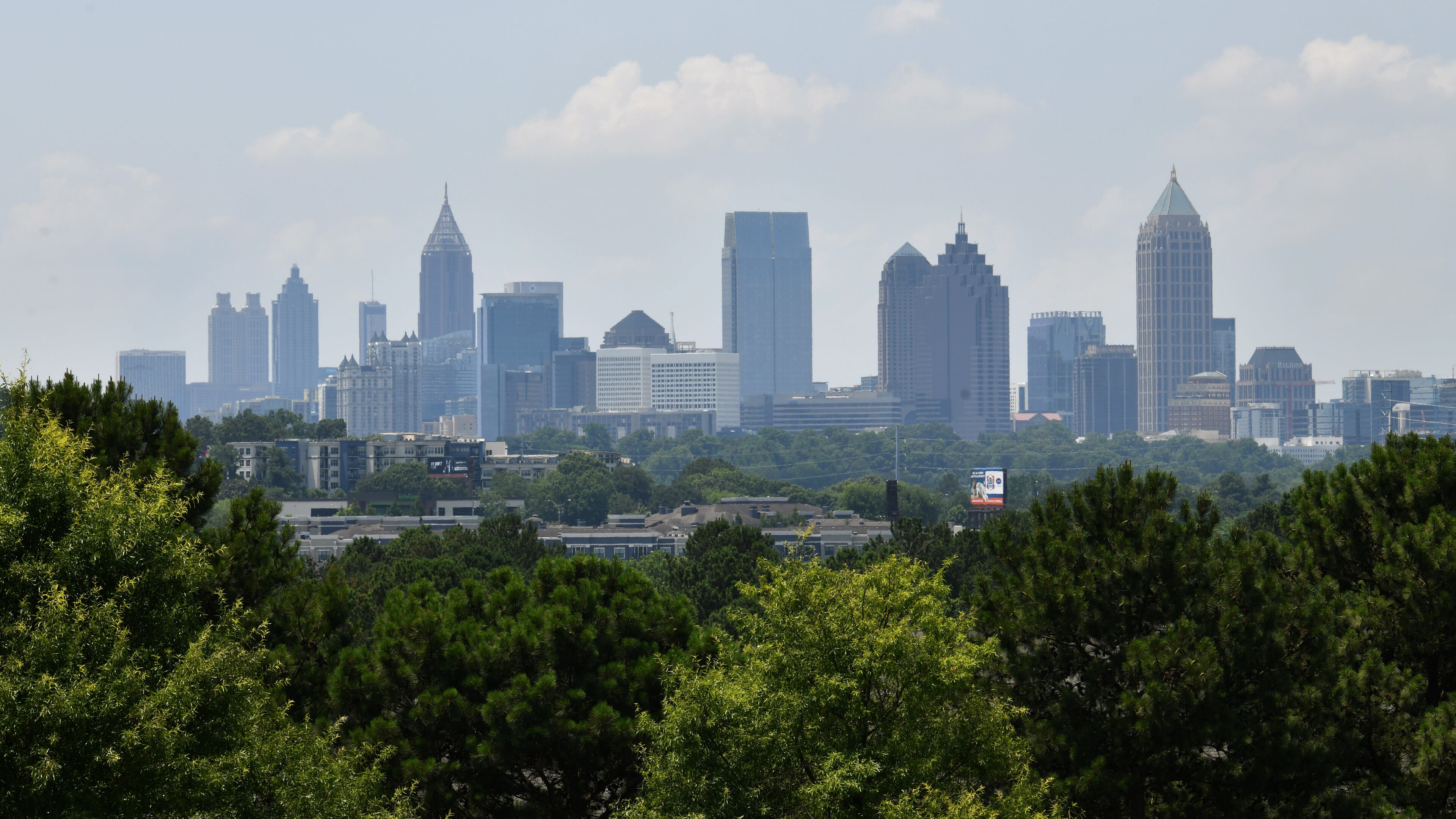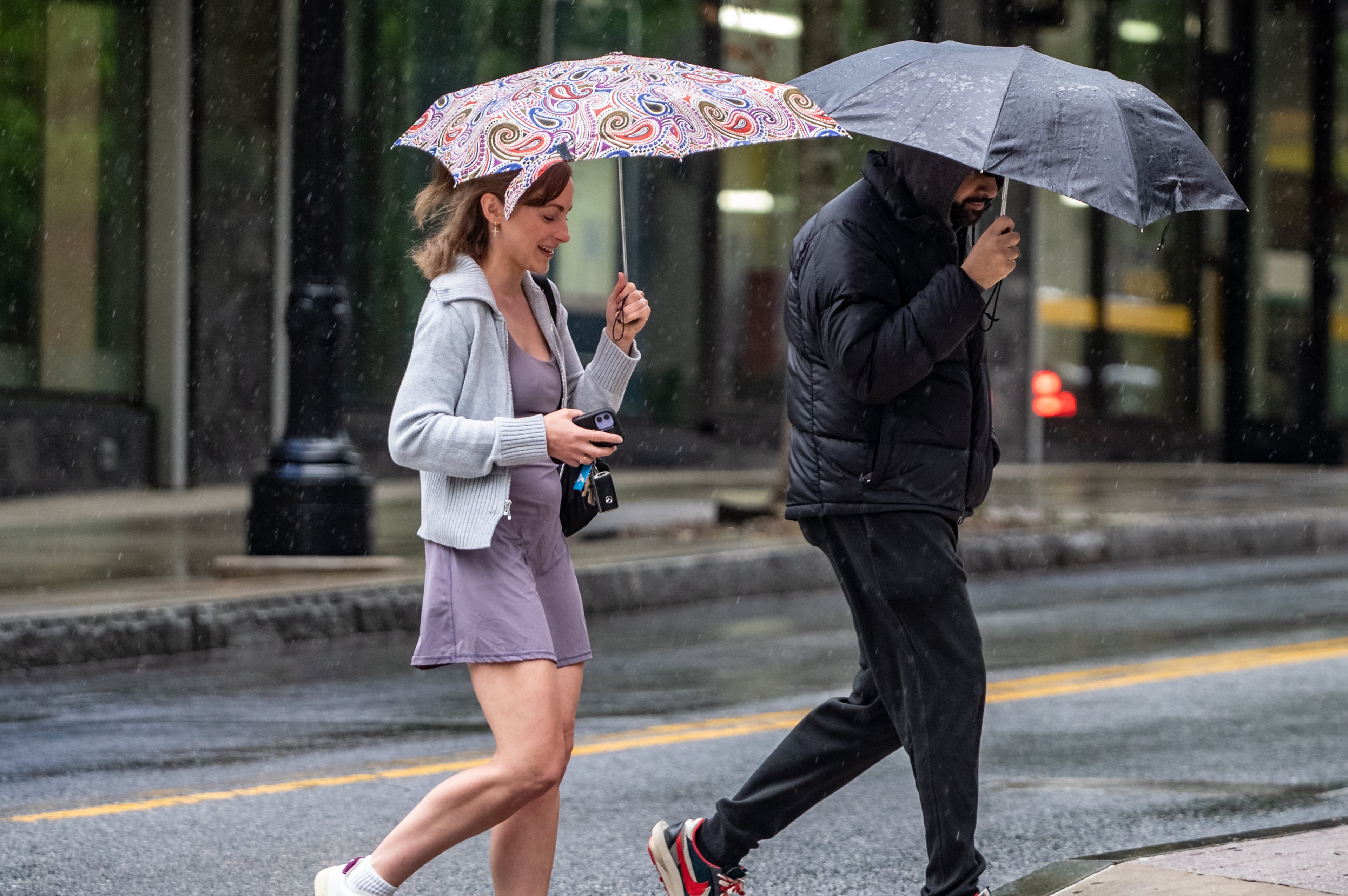Despite objections, City Council committee advances pared-back tree ordinance

A long-delayed effort to revamp Atlanta’s tree ordinance took a step forward Tuesday, after a City Council committee endorsed significant updates to the “city in the forest’s” rules that are supposed to protect Atlanta’s trademark canopy.
But the version that was passed on to the full council had been pruned of key provisions sought by tree advocates — and was advanced despite objections from some council members, who said the public had not had time to review the changes.
Council member Michael Julian Bond said he felt the public was owed an opportunity to digest and speak about the measure before a vote.
“To my knowledge, I don’t think anyone has seen it (the ordinance) prior to this very moment,” Bond said.
Bond and council member Andrea Boone pushed for the ordinance to be held until a later meeting, with Bond asking to convene a work session to consider the draft that was introduced Tuesday. But the pair was overruled by a majority of the committee members, who — after seeing previous efforts to pass tree legislation fizzle — said they wanted to push forward.
“I think what we’re seeing before us today is something that has been seen before,” said council member Jason Winston, who chairs the Community Development and Human Services Committee. “What I’m hearing from my constituents is they’re tired of us kicking the can down the road when it comes to the tree protection ordinance.”
The legislation was moved to the full council with a 4-to-1 vote, with Boone the lone vote against. Bond abstained from casting a vote.
A spokesman for Mayor Andre Dickens said the administration supports the version that advanced.
“Given a surge in both our population and rise in housing costs, the Administration believes this version strikes a balance between conservation concerns and Atlanta’s serious need for affordable housing,” said Michael Smith, the mayor’s press secretary.
The potential updates to Atlanta’s tree protection rules come amid a yearslong decline in the city’s canopy, along with an increase in heat waves fueled by human-caused climate change. Studies have found trees are among the most effective ways to keep the city cool.
Atlanta has adopted a goal of 50% canopy coverage, but the city’s tree cover has been short of that mark for years.
In 2018, Georgia Tech researchers found the city’s canopy coverage stood at 46.5%, down 1.5 percentage points from 2008. Many tree advocates say they expect the next assessment, which could be released soon, will show coverage is now below 45%.
No preservation standards ... for now
The measure advanced this week contains some changes that many have long said are needed to preserve the city’s canopy.
At the top of the list is an increase to the city’s tree removal fees, called recompense.
Right now, it costs $100, plus an additional $30 tacked on for each diameter inch of the tree’s trunk, to remove a tree in Atlanta with a city arborist’s approval, with the fee paid to the city. But recompense fees are capped at $5,000 to $10,000 per acre, depending on how the lot is zoned and regardless of how many trees are removed. Tree advocates, the city and even some developers have recognized for years that’s not enough to allow the city to cover the cost of replacing trees.
The version passed out of committee Tuesday increases removal fees to $140 per diameter inch of tree trunk. That’s above current levels, but lower than what was floated in recent draft ordinances. It also increases the per-acre caps on recompense to between $12,500 to $35,000 based on zoning.
Legislation heading to the full council also:
- Increases the maximum penalty for illegal tree removals from $60,000 to $200,000 per acre for cases where the arborist cannot determine how many trees were cut down. For cases where a single tree has been removed, the fines are $500 for the first infraction and $1,000 for each subsequent violation, plus payment calculated to replace the tree.
- Offers reduced recompense fees for affordable housing units
- Allows $400,0000 from the city’s Tree Trust Fund to be used to help low-income, senior citizen homeowners trim or remove hazardous trees
- Requires tree service companies operating in Atlanta to register with the city
The version moved out of committee Tuesday was also stripped of several provisions included in previous drafts, which tree advocates said were critical to canopy preservation, but that builders argued would stymie growth.
Earlier ordinance drafts included preservation standards that would have required developers of residential, commercial and multifamily properties to preserve a percentage of their lots to protect trees. Those proposals drew fierce pushback from builders, who claimed the requirements would crater development in the city.
Michael Paris, CEO of the Council for Quality Growth, which advocates for the development industry, said he was pleased with the direction of the ordinance the committee approved.
“This draft really achieves a balanced approach and really does what’s needed to allow for economic development to continue in the city and preserve the tree canopy that we have,” Paris said.
Tree advocates had a very different take on what was passed.
Kathryn Kolb, an Atlanta-based conservationist involved in efforts to update the ordinance for years, called the resulting legislation “a gross failure of process unbecoming to a city of Atlanta’s stature — a city with such important, valuable trees and an urban forest.”
Kolb said the removal of the preservation standards and the caps on tree removal fees were particularly problematic. She and other tree advocates have argued putting a ceiling on recompense does little to discourage clear-cutting and without preservation standards, the ordinance does not contain any real tree protections.
“For many, if not most, properties with any significant number of trees, the recompense will effectively be less than what developers are paying today,” Kolb said. “It’s a regressive joke.”
Rift between council and city planning
Tuesday’s meeting also revealed growing tension between some council members and the Department of City Planning’s leadership over the ordinance revamp.
Council member Bond — along with Council member Boone — said the process felt rushed and asked City Planning Commissioner Jahnee Prince why there was a need to move forward now with “stripped” down legislation.
Prince told Bond the legislation contained “the basic things that we need for tree protection in our city right now.” She said other pieces of the ordinance would be tested later this year alongside Atlanta’s new zoning rules, which are also in development.
Many builders have also called for the new zoning rules and tree ordinance to be tested together.
Later, Bond ramped up his critique of the legislation, telling Prince it “doesn’t protect trees.” Prince fired back, arguing the ordinance does save trees.
Bond said he wouldn’t stand in the way of the committee’s vote, but said he’d be proposing new legislation to track the Department of City Planning’s efforts to test the rest of the ordinance.
Now, the measure could be taken up for a vote as soon as Monday by the full city council. Its fate there is not clear, but new changes — and headwinds — are possible.
A NOTE OF DISCLOSURE
This coverage is supported by a partnership with Green South Foundation and Journalism Funding Partners. You can learn more and support our climate reporting by donating at ajc.com/donate/climate.


